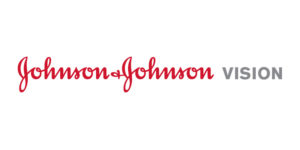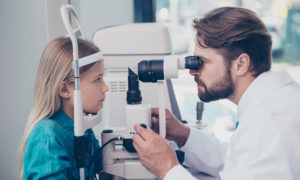June 12, 2020
 Jacksonville, Fla, and Santa Ana, Calif. — Johnson & Johnson Vision, a global leader in eye health and part of the Johnson & Johnson Medical Devices Companies, today announced new clinical research on myopia progression in children and detailed significant child myopia screening and education progress in the Asia Pacific region. The clinical research and public health programs are part of the comprehensive Myopia research collaboration with the Singapore Eye Research Institute (SERI) and Singapore National Eye Centre (SNEC) launched in April 2019.
Jacksonville, Fla, and Santa Ana, Calif. — Johnson & Johnson Vision, a global leader in eye health and part of the Johnson & Johnson Medical Devices Companies, today announced new clinical research on myopia progression in children and detailed significant child myopia screening and education progress in the Asia Pacific region. The clinical research and public health programs are part of the comprehensive Myopia research collaboration with the Singapore Eye Research Institute (SERI) and Singapore National Eye Centre (SNEC) launched in April 2019.
“Current estimates show that by 2050 half of the world’s population is expected to be myopic, with a disproportionate impact on our children,”1,2 said Xiao-Yu Song, MD, PhD, Global Head of Research and Development, Johnson & Johnson Vision Care, Inc. “Through close collaborations with SERI, SNEC and other aligned public health groups, we are helping to address this crisis by building a better understanding of the science and biology behind myopia and developing comprehensive programs to address and treat the disease.”
This week researchers for the collaboration presented some of its first clinical research findings at the Association for Research in Vision and Ophthalmology (ARVO) annual meeting. The collaboration’s five studies at ARVO focus on new techniques and practices to better predict myopia progression and vision impairment, significant challenges for eye care professionals when so much of myopia disease progression is still to be understood.
The research team presented new findings on Myopia progression from one of the largest clinical research studies with children. In the study of 674 myopic children aged seven to 10-years old over two-years, the authors found that a child’s prior year myopia progression correlates with immediate subsequent year progression. That is, the investigators found that children with slow myopia progression during the first year generally had slow progression in year two, while children with fast myopia progression in year one generally had fast progression in year two.
However, the authors report that year-over-year progression as a single factor does not fully predict long-term myopia progression and that a child’s age and parental myopia are important additional variables to consider in choosing whether to treat a child’s progression.
“Globally, for parents of children with myopia, and eye care professionals, an important takeaway is the need for myopic patients to receive regular annual check-ups,” said study lead author Noel Brennan, PhD, Global Lead, Myopia Control, Johnson & Johnson Vision. “While myopia progression rates will naturally be followed from year to year, it is also important that eye care professionals consider age of myopia onset and parental myopia.”
The author presentation and study, Annual Myopia Progression and Subsequent Year Progression in Singaporean Children, was published today on ARVOLearn as part of ARVO’s virtual congress.
Since the formal launch of the collaboration just over a year ago, Johnson & Johnson Vision, Johnson & Johnson Global Community Impact, SERI and SNEC have also been working to advance critical myopia screening and education programs in the Asia Pacific region where current prevalence rates among young people are as high as 80 to 97 percent in urban areas in East Asia and Singapore.3
In China, among children ages six to 18, myopia prevalence rises from less than 10 to 80 percent.4In Singapore, one in two children develop myopia by the age of 12, and 75 percent of teenagers are myopic and rely on glasses.5 Left unchecked, in some patients, myopia can lead to blindness or other eye health conditions that can severely impact vision and overall well-being.
“Tackling the myopia epidemic globally requires a comprehensive approach that includes critical education and screening campaigns,” said Dr. Song. “We are very pleased by the progress of the public health programs in Asia being supported by the collaboration, and that young children are receiving comprehensive eye exams and necessary referrals when diagnosed with myopia. We look forward to continued progress as we learn to manage these initiatives through the COVID-19 pandemic.”
Working through the Fred Hollows Foundation, and China’s Yunnan Provincial Health Commission and Provincial Education Department, the collaboration launched its three-and-a-half-year Child Eye-Health Program in China’s Yunnan Province in August 2019. The program trains ophthalmologists, refractionists, community health workers and teachers in screening techniques and supports student screening programs. In the second half of 2019, the collaboration has already supported the screening of nearly 30,000 primary school students in Yunnan Province, and provided eye health and myopia prevention knowledge to almost 20,000 students.
The collaboration has also become a strategic partner with the the Ministry of Education’s Research Center for Prevention, Control and Diagnosis of Myopia to support the improvement of myopia public awareness and the development of myopia awarenesss education tools. In addition, the collaboration is working with the Beijing Preventative Medicine Association and Beijing CDC on a myopia school screening program that is seeking to examine 4,000 students from September 2019 to the end of 2020.
1 Holden et al Ophthalmol 2016; 123: 1036
2 Taiwan, Lin et al 2000 Ann Acad Med Singapore 2004; 33:27-33
3 Ding et al Survey of Ophthalmol 2015.
4 Taiwan, Lin et al 2000 Ann Acad Med Singapore 2004; 33:27-33
5 HealthXchange, Common Eye Problems by Age Group, Stats and Care Tips













